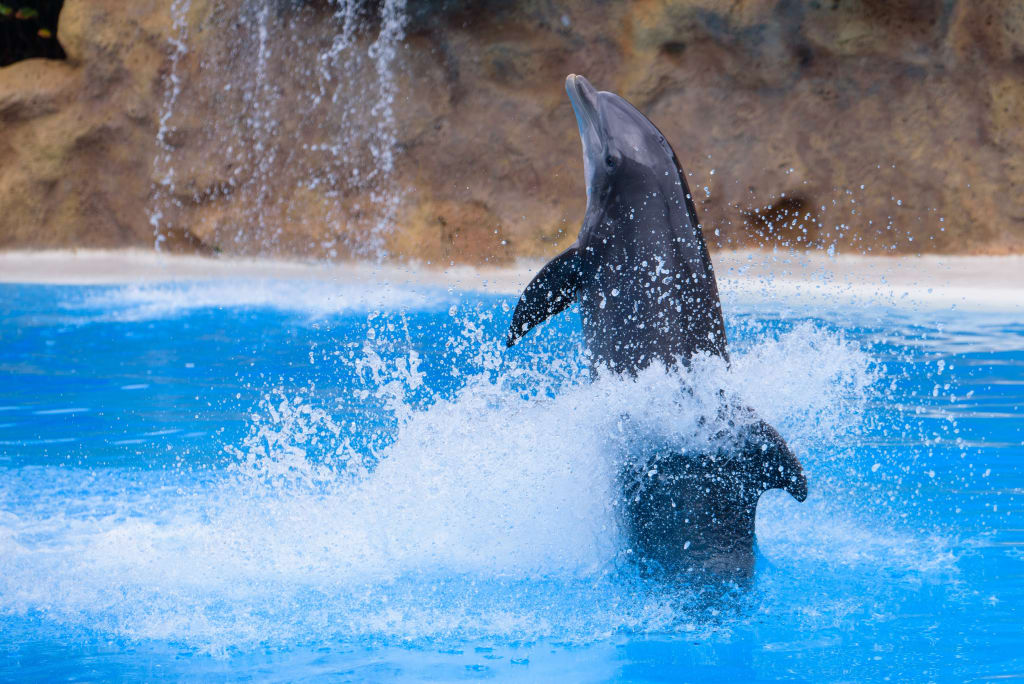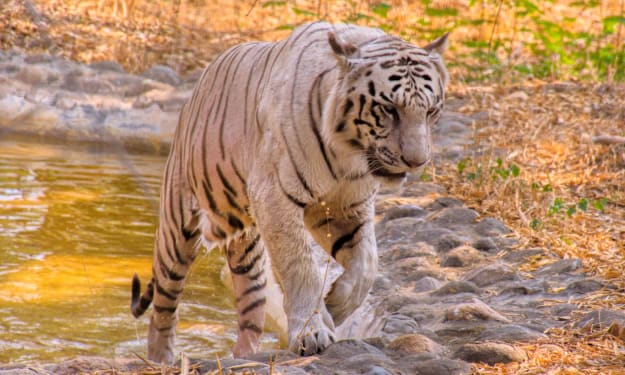PETA Breaks The Internet?
While there is no arguing that the COVID-19 Pandemic has seen the rise of cyberbullying on social media, these examples of internet harassment by animal rights extremists saw both zoo professionals and the facilities they work for become subjected to online bullying.

While the COVID-19 Pandemic has forced many zoos and aquariums to stay closed to the public until it is contained, many animal care professionals continue to care for the animals that call these facilities “home”. They often update people on how the animals are doing, share some facts about their natural history, and even demonstrating how they care for them through husbandry and training sessions. While many are praising these people as “heroes” to both people and animals alike, there are some who don’t see it like that at all.
In my last article, I spoke about extremist Laurice Dee and how she and her followers were using Facebook and other social media platforms to target zoos and aquariums, as well as commit crimes on the facilities’ properties. Well, these attacks are not just limited to attempting to cause public disturbances and spamming facilities with death threats through emails and phone calls, it can also be found on the facility’s official social media pages as well as the pages belonging to individual zoo and aquarium professionals, who are all already taking the burden of this pandemic as it is.
Some of these extremists who are committing such acts are followers of Dee, while others are doing it in the name of groups such as PETA, Orca Network, Dolphin Project, and others. Yet, despite their actions going against the rules and policies of many social media sites like Facebook, Instagram, and YouTube, their content is rarely ever taken down even though they contain references to death threats and graphic violence. This shows how the “report” systems on these sites are flawed since they often involve the use of a bot rather than an actual person to take the time to look at the offensive content to see if they go against social media guidelines.
So, without further due, here are a few examples of how animal rights extremists target individual facilities and professionals who work in the field of animal care.
1.Winter the Dolphin
Winter is an Atlantic bottlenose dolphin who was rescued in New Smyrna Beach, Florida in 2005 after her tail got caught in a crab trap. Named after the season in which her rescue took place, Winter’s injuries were severe that she was not expected to survive. However, while she lost her tail a few days later, she did manage to make a full recovery and become a permanent resident at Clearwater Marine Aquarium after the federal government deemed her “non-releasable”, due to her age at the time of her rescue, and the loss of her tail requiring her to use a prosthetic for therapeutic purposes. Her story has also been on international news and has been the subject of several books, movies, documentaries, and several TV segments.
Yet, that has not stopped animal rights extremists like Ric O’Barry and Naomi Rose from wanting to acquire Winter for themselves to use her to have her placed in a non-existent “sanctuary” where she would not receive the same high-maintenance care that she requires since she is a disabled animal. They even made a sixteen-minute documentary on YouTube proposing their claim that Winter is being “abused” at Clearwater Marine Aquarium(spoiler: she’s not), and needs to be bought out at extremist and convicted animal abuser Ric O’Barry. Keep in mind that the video made no mention of the aquarium’s other resident dolphins, nor that they have recently been involved in the rescue and rehabilitation of a rough-toothed dolphin just before the pandemic landed on the shores of the North American continent. After the video was released on YouTube, animal rights extremists began to spam the facility’s official Facebook page with comments that accused the facility of “exploitation”, and “abuse”.
At one point, Laurice Dee, the mastermind behind the sabotaging of Dolphinarius Arizona, attempted to capitalize on Winter’s story by writing up her story as if she was deliberately collected from the wild by a fisherman who later cut her tail off. That is not how it happened and Laurice and her followers know this.
2. Hazel and Dolphin Quest
For anyone who has read some of my previous works here on Vocal, Hazel McBride is a friend of mine who works as a killer whale trainer at Marineland France who published a memoir that put her journey on the spotlight last spring. Upon the book’s publication, Hazel opened up a new Facebook page that was dedicated to her work with orcas and other marine mammals. While the book has gotten a lot of people interested in working with marine mammals in zoological parks, not everyone, well, was pleased to see a trainer using social media as an education platform.
If you look at the reviews on Hazel’s public Facebook fan page, they are not coming from parents whose kids have decided that they want to work with animals one day, nor are they coming from other zoo professionals who have read her book; they are coming from animal rights extremists who are simply judging Hazel for being a killer whale trainer. The “reviews” that these extremists, many of whom, I can assume are part of the radical vegan group known as “Direct Action Everywhere”, are pretty hostile.
Some accuse her of “exploiting” the animals, some accuse her of “abusing” the animals, while others try to force their views on a trainer who not only knows killer whale biology but also, has expertise in killer whale husbandry, training, welfare, and care, which means that her job requires to do more than just conduct training sessions with the mammals in front of a live audience. It also requires her to provide conduct husbandry sessions that ensure that the animals are healthy and active throughout the day and provide any enrichment that encourages them to display natural behaviors that their wild counterparts would display out in the wild.
One person even went as far as to tell her to get a “proper” job because apparently, working with animals at a zoo or an aquarium is not considered “proper” for no reason other than the fact that it offended him.
Similarly and at the same time, the page “Boycott SeaWorld” plagiarized and re-uploaded a video from Dolphin Quest Hawaii’s Facebook page that showed a trainer playing with a dolphin, which incited a wave of threats towards the trainer as well. Just like Hazel, she was labeled as a “mentally deranged” animal abuser. As someone who has done a few animal training internships, I have received many threatening messages on my Facebook and Twitter pages that were so offensive, I am choosing not to repeat what they wrote in their messages.
Just to make matters worse, Brittney Hernandez, the admin of the BSW page, encourages such behavior on social media despite it going completely against Facebook’s guidelines. Also, encouraging people to harass zoo professionals and threatening to inflict bodily harm on them is a violation of the Animal Enterprise Act of 2006, which makes it illegal for anyone to commit crimes of any kind, on either a facility’s property or on the internet in the name of “animal rights”. It’s considered to be a form of eco-terrorism.
3. Hypocritical Exploitation of Animal Deaths
On April 20th, 2020, UShaka Marine World in Durban, South Africa announced the death of Gambit, the park’s beloved elderly dolphin who lived to be 48 years old, or nearly equivalent to a human living to be 100-years old. While he was collected off the coast of Namibia over four decades ago, the fact that he lived this long is proof of how well the trainers there cared for Gambit and the other dolphins that live there. Throughout his life, Gambit sired six calves and has at least one grand calf who resides at the park.
In recent months, however, Gambit began to show signs of age-related health issues that required monitoring by both the animal care and veterinary teams who did all they could to help him feel comfortable during the last few months of his life. He was also thought to have been the largest bottlenose dolphin in the care of man.
While UShaka Marine World did receive a lot of support from both zoo professionals and patrons alike, Activists who are a part of Direct Action Everywhere saw the elderly dolphin’s death as the opportunity to harass the facility’s Facebook page by praising his death by suggesting that he was now “free” and so on. One would think that these people would give the facility some support during their time of grief, but instead, they are using his death to promote an agenda, which to me, is just heartless on so many levels and it just shows you that activists like tragedy more than triumph.
4. Swim with Dolphins, Get Harassed by Activists
As someone who has done an internship at a dolphin swim facility, there is no arguing that enabling people to meet animals up-close and in-person not only helps people learn about the animals they are about to have a hands-on encounter with but also, inspires them to want to learn more about what they can do to protect wild dolphins and their ever-shrinking habitats. Also, in my experience of interning at that one facility alone, I can tell you that if these animals did not want anyone other than trainers and interns in the water with them, then, they would not get excited every time people walked by to get ready to go into the habitats since they were more motivated by rubdowns and toys than they were with the food.
So, what does my personal experience working at a dolphin swim facility have anything to do with this article you may ask? Well, it has more to do with the fact that a social media influencer on Facebook posted a photo of himself during a dolphin swim at an unknown facility. While most of the comments were positive with parents talking about how their kids wish to swim with dolphins someday, one extremist advised the influencer, whose name is Ken Alicea, to watch the documentary “The Cove”.
This film focuses on Japan’s dolphin drive fisheries, but it also created a cult of extremists who insist that all dolphins that reside at zoos and aquariums were acquired from Japan’s drive fisheries in the seaside town of Taiji. That is not the case. The practice was originally established in 1606 for traditional consumption while it was later used as a form of pest control. Facilities began to acquire animals from the drive fisheries in the mid-1980s, but many of them are based in Japan, China, Taiwan, and Korea, with none being based in North America, nor Western Europe. Yet, only less than one percent of all dolphins that are driven into Taiji Cove are sold to Asian-based facilities while the rest are all killed.
It should also be noted that in recent years, in response to public concern, many Japanese facilities have chosen to no longer obtain animal more animals from Taiji in favor of improving their marine mammal programs to put more focus on finding better ways to improve animal care programs and establish breeding programs for their already existing animal collections. Currently, many of the active markets for live dolphins are in China.
5. Activists VS Big Ben 7
Although it is very common for animal rights groups to encourage activists to harass zoo and aquarium patrons for visiting facilities that house marine mammals, they also encourage followers to target celebrities for bringing their families to visit these facilities. This was the case with athlete Ben Roethlisberger, who, earlier this year, brought his family to SeaWorld San Diego to take part in a poolside dolphin encounter at the park during a February weekend visit. This took place a month before the COVID-19 Pandemic reached the shores of North America.
Upon reading the comments on Roethlisberger’s Facebook page, many of them are positive with fans thanking him and his family for showing their support for SeaWorld’s animal programs. However, a few activists decided to slam him by calling him a child abuser for letting trainers introduce his kids to SeaWorld’s resident dolphin family while trying to force him to watch “The Cove”. One activist even went as far as accusing him of spousal abuse for letting his wife tag along with the rest of the family.
Animal Rights activists think they are “educating” people by sending threatening messages to guests on social media when in reality, it can easily be regarded as a form of eco-terrorism.
In Conclusion
While there is no arguing that there are animals out there who are suffering and need to be rescued, this is not the point of this article. The real point is that these self-proclaimed “keyboard warriors” doing more harm to the animals they claim they want to save than any good by sending threatening messages to both zoogoers and zoo professionals alike. Yet, despite it going against the standards of social media sites like Facebook, Twitter, and Instagram, activists, get away with their actions online and the situation continues to get worse as the pandemic continues to force people to stay at home.
Social Media sites need to do more to take action against radical extremists who harass in the name of animal rights.
About the Creator
Jenna Deedy
Zoo and Aquarium Professional, Educator, Cosplayer, Writer and B.A. in Psychology whose got a lot to share when it comes to animals, zoos, aquariums, conservation, and more.
Instagram: @jennacostadeedy






Comments
There are no comments for this story
Be the first to respond and start the conversation.